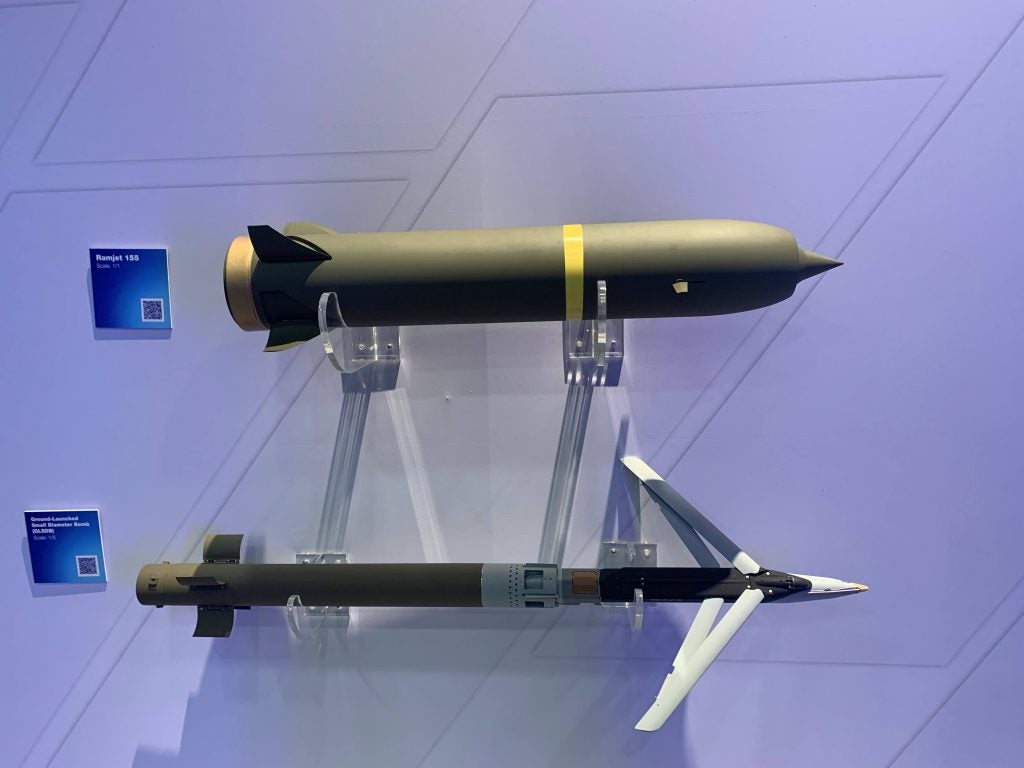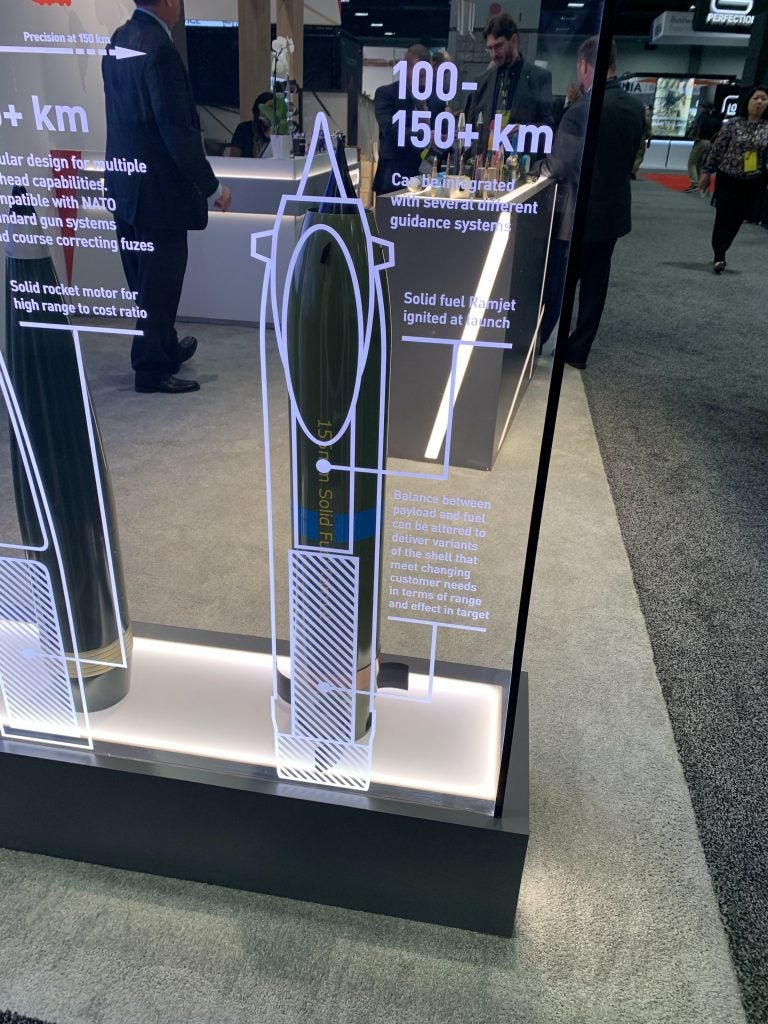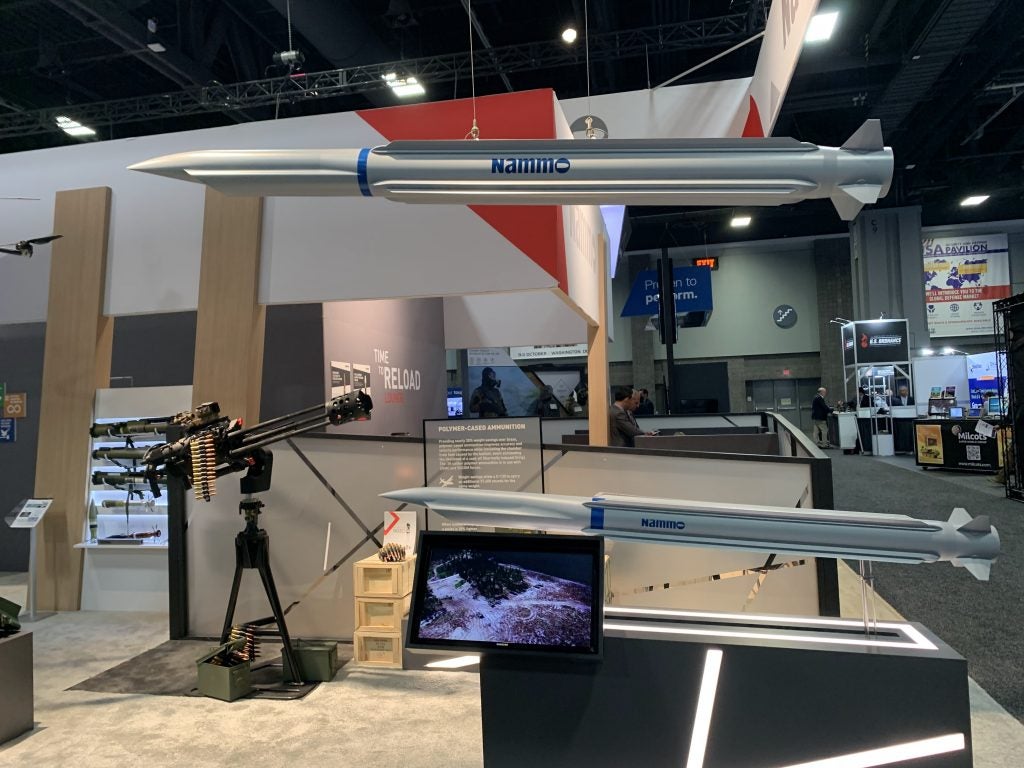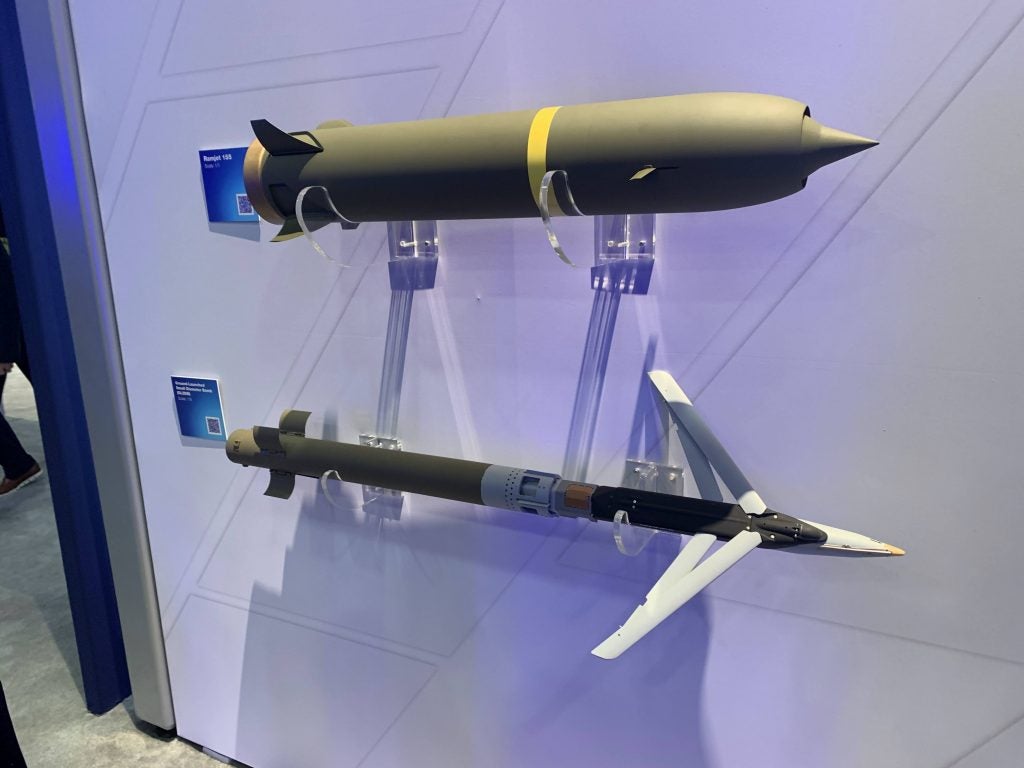AUSA 2022: Update on Boeing/Nammo Ramjet Artillery Round
The Ramjet 155mm shell appeared again at the Association of the United States Army’s annual meeting and exposition. This is not Ramjet 155’s first appearance at AUSA, but with a successful test earlier this year in Norway, Overt Defense spoke with Boeing on the progress of the development of the round.

The joint Boeing-Nammo project aims to provide a shell that will “fly faster and farther than any H.E (High Explosive) projectile,” thanks to the incorporated Ramjet technology. A Boeing representative gave an overview of Ramjet 155’s three steps:
“There’s basically three pillars to it: ignition, full motor burn, and thrust. It [Ramjet 155] ignites, the motor burns 30 to 60 seconds, the motor burns out, hits Apogee, canards deploy, and it locks onto its target.”
The representative also highlighted the importance of the January test in Norway, as the test was the first successful ballistic test of the munition.
“What makes Ramjet 155 so much different is, it’s a mach-driven machine. If the mach is too slow coming out the hole it’s not going to shoot far enough. If it’s too fast, it’s going to become unstable. The big purpose behind the test we did in Norway was to verify the propulsion performance and the stability of the vehicle. The biggest challenge with this 39-inch, 102-pound bullet is getting it stable and getting flying. And it was the first time in history that it had ever survived an indirect shot out of a cannon and survived harsh gun launch conditions. So we were very happy with how that went.”
Nammo also reflected on this challenge during testing, with the company’s Insight magazine featuring a statement by the Vice President of Advanced Propulsion Technology on the test:
“This was not an easy feat, especially considering the violent g-forces (15.000Gs) the projectile is subjected to during launch.”
Ramjet 155 is to be compatible with all existing NATO 155mm guns. Going forward, the project aims to have Ramjet 155 fired out of the 155mm L/58 cannon.
“It’s a common round for all three platforms, the L/39, the L/52, and the L/58. We recently demonstrated it in Norway with the L/39. As far as what’s next, what we did with the L/39 we want to fast-forward that and take it to the L/58. The next big thing is we want to do what’s called the charge establishment test on the L/58. We want to see what kind of a mach we’re going to need coming out of that gun. Following that, we want to demonstrate the L/58 ballistically like we did the L/39 (referring to the Norway Test).”
In Nammo’s release, the recent tests in Norway indicate the beginning of more intensive testing. Specifically for long-range tests.
“The success of the January-March, 2022 campaign means that the next phase, long distance testing, is rapidly approaching.”

One notable point highlighted by the Boeing representative was the impact, or “brute force,” of Ramjet 155 on the barrels of guns compared to conventional shells. Ramjet 155 is to have drastically less wear on the systems it is fired from.
“The current munitions are just really beating the tubes up pretty hard. And with everything going on in the world right now, there’s a lot of munitions getting shipped, of course to Ukraine. A lot of M777 howitzers too that are getting really, really worn out. So this is an option for the army that gets them away from what I grew up with as a kid as an artilleryman, that old thing called brute force on the guns.”
Boeing is confident in the potential that Ramjet 155 brings, and is hopeful about the project going forward.
“I think we got something really good here. Ramjet technology is very transformative. We’re hoping in about two years we can get this into an EMD (Engineering & Manufacturing Development) program.”
Nammo shares Boeing’s confidence, with the company’s CEO stating:
“Projects like this one, the ramjet development, often can take more than a decade. Problems or setbacks can occur, and redesigns are common. In this case however, I believe we are seeing much more rapid progress. We have had no major stumbling blocks, and for something as technologically complex as a ramjet engine, I believe that is extraordinary.”
When asked about the range of Ramjet 155, the Boeing representative could not give a response as they are currently focused on other aspects of the shell. However, the range will be greater than existing shells fielded by the U.S. Army, they noted:
“We really don’t know. I don’t know because we have to continue verifying the propulsion performance and getting it stable. But I can tell you that our goal is for it to shoot further than anything the Army currently has.”

While Boeing could not provide a definite range, Nammo seems to be able to. At the Norwegian company’s booth, a display states the Ramjet 155 could range between 100 to over 150 kilometers. And in a press release, it is stated that during long-distance tests the shell could “fly well over 100 km.”

Boeing’s booth at AUSA 2022 included two new concepts the company is putting forward, the Modernized Apache Concept and the Next Generation Short-Ranged Interceptor. The Modernized Apache Concept aims to further modernize the existing AH-64E, adding a pylon on each wing, an Improved Turbine Engine, and a new cockpit. NGSRI is Boeing’s submission to the U.S. Army’s stinger replacement program and has been covered by Overt Defense in an interview with Boeing.

